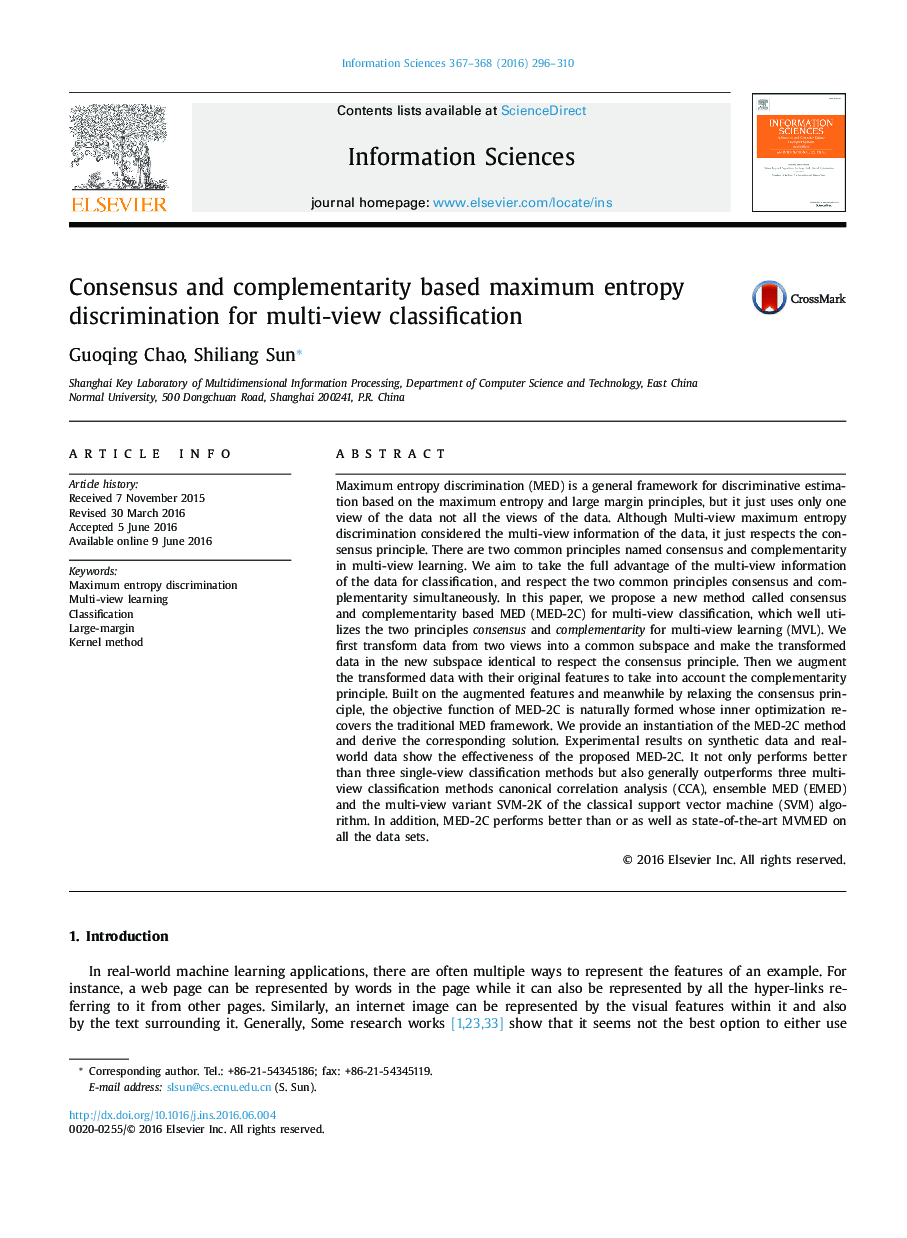| کد مقاله | کد نشریه | سال انتشار | مقاله انگلیسی | نسخه تمام متن |
|---|---|---|---|---|
| 6857166 | 661905 | 2016 | 15 صفحه PDF | دانلود رایگان |
عنوان انگلیسی مقاله ISI
Consensus and complementarity based maximum entropy discrimination for multi-view classification
ترجمه فارسی عنوان
بیشترین تبعیض انتروپی بر پایه توافق و هم افزایی برای طبقه بندی چندبعدی
دانلود مقاله + سفارش ترجمه
دانلود مقاله ISI انگلیسی
رایگان برای ایرانیان
کلمات کلیدی
حداکثر تبعیض آنتروپی آموزش چندرسانه ای، طبقه بندی، حاشیه بزرگ روش کرنل،
موضوعات مرتبط
مهندسی و علوم پایه
مهندسی کامپیوتر
هوش مصنوعی
چکیده انگلیسی
Maximum entropy discrimination (MED) is a general framework for discriminative estimation based on the maximum entropy and large margin principles, but it just uses only one view of the data not all the views of the data. Although Multi-view maximum entropy discrimination considered the multi-view information of the data, it just respects the consensus principle. There are two common principles named consensus and complementarity in multi-view learning. We aim to take the full advantage of the multi-view information of the data for classification, and respect the two common principles consensus and complementarity simultaneously. In this paper, we propose a new method called consensus and complementarity based MED (MED-2C) for multi-view classification, which well utilizes the two principles consensus and complementarity for multi-view learning (MVL). We first transform data from two views into a common subspace and make the transformed data in the new subspace identical to respect the consensus principle. Then we augment the transformed data with their original features to take into account the complementarity principle. Built on the augmented features and meanwhile by relaxing the consensus principle, the objective function of MED-2C is naturally formed whose inner optimization recovers the traditional MED framework. We provide an instantiation of the MED-2C method and derive the corresponding solution. Experimental results on synthetic data and real-world data show the effectiveness of the proposed MED-2C. It not only performs better than three single-view classification methods but also generally outperforms three multi-view classification methods canonical correlation analysis (CCA), ensemble MED (EMED) and the multi-view variant SVM-2K of the classical support vector machine (SVM) algorithm. In addition, MED-2C performs better than or as well as state-of-the-art MVMED on all the data sets.
ناشر
Database: Elsevier - ScienceDirect (ساینس دایرکت)
Journal: Information Sciences - Volumes 367â368, 1 November 2016, Pages 296-310
Journal: Information Sciences - Volumes 367â368, 1 November 2016, Pages 296-310
نویسندگان
Guoqing Chao, Shiliang Sun,
